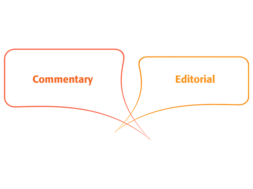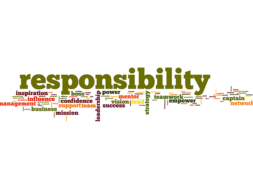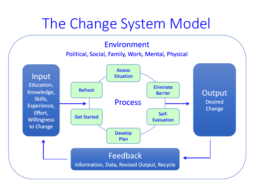
What Happened to Commonsense in Education?
By Dennis Spisak, Founder and President, DJSpisak Consulting
The career college sector has been in the cross hairs of the federal government, state governments, and consumer protection agencies for the last couple of years. Their motivation appears to be looking out for the best interests of students in our schools and making sure government funding is spent wisely and carefully in protection of taxpayers.
While I find such intentions admirable, I am confused as to why the focus is only on one sector of the overall education system of the United States. If we want to do what is good for students and if we are dedicated to protecting taxpayer’s money, we really need to be looking at the entire education system in our country because it is in shambles. All one has to do is read various studies, reports, etc., many of which are published by the federal government, to see that our educational system has been declining for the last 50 plus years and the trend is for further decline. Over that 50 plus year span, decisions have been made that placed a Band-Aid over a major problem as a temporary fix or were knee jerk reactions to a crisis that occurred in a moment in time. No regard appears to have been given to the lasting effect such decisions would have on our entire educational system in the long term.
The career college sector is one part of the overall educational system in the United States. Pre-school, elementary, middle school, high school, community college, four-year colleges and universities, as well as the career sector, make up the total education system in the United States. Often times, what happens in one sector has bearing on the success or failure of another sector within the system. For example, if a student does not leave elementary school with a strong foundation in basic skills, it will have negative impact on their success in high school and beyond. If our government, as proposed, decides to provide free education at the community college level, it will have a negative effect on first-term enrollment at the college and university level.
Our system was designed to offer options and choices for our students, as all students are different with varying skills, abilities, and desires in terms of a career.
For decades our system worked so well that we were ranked at the top in education among the industrialized countries. However, for the past several decades we have been declining in such rankings.
There are many reasons for this but most are a result of questionable or outright bad decisions based on social or political reasons versus on what was good for our students and our overall educational system. At some point we began making decisions based on a situation effecting one or two of the segments of our total system with disregard to the effect such decisions would have on the overall system. We basically took commonsense out of the equation. We let individuals or groups, without a background in education or experience in education, influence or impact major changes to our total educational system based on their wants versus what was good for the overall system and ALL students within our system. We now have a system that is ranked 17 of 40 in overall education performance1 as a result.
How bad is it?
- 2 out of 3 eighth graders cannot read proficiently.2
- 2/3’s of eighth graders scored below proficient in math.3
- 2 out of 3 eighth-and twelfth graders cannot write proficiently.4
- Each year, 3 million high school students in the United States drop out of school.5
- The United States had the highest high school graduation rate in the world after WWII. Today we are 22nd among 27 industrialized countries.6
- Less than half of United States students finish college. U.S. ranks last among 18 countries measured.7
- Only 1 in 4 high school students graduate ready for college in all four core subjects (English, reading, math and science).8
- 1/3 of students entering college have to take remedial courses.9
Following are a few major decisions or actions that have taken place in the past 50 plus years that, in my opinion, have had an adverse effect on the educational system of the United States. I stress “in my opinion” because there are pros and cons to many of these and although I do recognize the reasons why they were made and believe they were made with good intentions, overall I believe they have proven to be more detrimental than beneficial to our educational system and to students within the system.
- Social promotions. Primarily a decision promoted by parental and society influence. Decades ago, if a student was not reading at their grade level in the early years of their education, they were held back. We know there is a point in a student’s early education that if they do not have a good foundation in the basic skills, they cannot learn new material. If a student does not know multiplication tables by the third grade, how can we expect them to learn new math in the fourth grade or beyond?
There is a reason why the number of students requiring developmental courses in our two- and four-year colleges has drastically increased in the past several years.
The social impact on the student certainly has to be taken into account when considering holding a young child back but we also need to consider the negative impact of moving such a student forward. They will not likely have academic success. They will be labeled a poor student and will be extremely frustrated as they try to keep up with their class. Imagine the impact those experiences will have on the student’s self-image, which will stay with them for the rest of their lives.
One year I had a class of seniors where the highest reading level was fifth grade. They did not do well on tests because they could not read the questions. They had been passed on year-after-year and no one expected anything from them in terms of academic success. Not one of those students had aspirations for a good paying job. They saw themselves in low-income positions or on welfare because they had been conditioned to believe that they were not smart enough for anything else. The system failed them and, in my opinion, has failed generations of students in similar situations.
Perhaps we should be offering summer school in the early grades to such students to make sure they are at the level of their classmates before moving them on to the next grade where they will most likely not be successful. In any case, we cannot sit back and continue to accept the fact that a growing number of students are graduating high school without basic skills or applying to our colleges far from being prepared to be successful in college.
- Everyone has to be a winner. Another situation generated by social and parental influence. In life, not everyone is a winner in everything they do. We learn from such experiences. What are we teaching if we insist that everyone on a sports team receives a trophy if they earned it or not? What are we teaching if we allow a child to continue to be in the band if they cannot learn to play an instrument at the level acceptable to be in the band? If a student earns a “C” on a test, why do some schools offer extra credit to allow them to bring up the test grade? They obviously did not know the required material covered on the test. Next time they can study harder if they want an “A” grade or accept the grade they receive based on the effort they put into studying. If we are not at the level we need to be in a particular activity we have options. We can work harder to reach the level we need to be or we can accept the fact that no matter what we do, we will never reach that level and look for something that is more suited to our abilities and skills.
The idea that everyone is equal is fostering an entitlement It promotes acceptance of mediocrity when the same results occur no matter what the level of performance and it stymies self-improvement and work ethics.
- Everyone needs to go to college. This is probably one of the most detrimental concepts to our overall educational system and one that contributes to a number of other problems affecting our education system, including the high dropout rate we experience in our secondary schools. It is a result of a knee-jerk reaction by government over the publication of “A Nation At Risk: The Imperative for Educational Reform,” and the social status a four-year college degree has in the minds of parents who want “a better life for their children.” The curriculum changes that took place as a result of “A Nation At Risk” failed to take into account the job market, changes in the workplace, and the technology and skills needed for the workplace of the future. Increased credits were required at the secondary level in science and math at the expense of vocational courses and programs including trade, home economics, and business education. Unfortunately, few changes have been made to the curriculum in recent years to reflect the reality of 2015.
For decades our secondary schools offered tracks for students. We had general, commercial, industrial arts/trades, and college prep. The track with the lowest enrollment was typically the college prep track. True, it was a different world then and what stands out is that most jobs in past decades did not require a four-year college degree. High school graduates, with training in the trades or commercial/business could find quality jobs. Today, the number of jobs requiring a four-year college degree has not dramatically changed from previous decades; however, most jobs today do require one or two years of specialized post-high school training.
The Department of Labor published their projections of occupations with the most job growth from 2012 to 2022 and of the 30 occupations listed, 5 require a four-year college degree. 21 require post-high school training with certificate or associate degree attainment while 4 required a high school education or less.10
The Georgetown University Center on Education and the Workforce projects 14 million job openings – nearly half of those that will be filled by workers with post-secondary education – will go to people with an associate degree or occupational certificate. Many of these will be in “middle-skill” occupations such as dental hygienist, electrician and construction manager. Surprisingly, they pay more than many of the jobs held by those with a bachelor’s degree. In fact, 27 percent of people with post-secondary licenses or certificates-credentials short of an associate degree-earn more than the average bachelor’s degree recipient.11
Our high schools continue to place emphasis on a four-year college degree even though the majority of students in a comprehensive high school probably should not go to a four-year college, do not want to go to a four-year college, and will not benefit from a four-year college degree from a career/job standpoint. In other words, we have a high school curriculum developed for the minority of students in our high schools. Could the high dropout rate at the secondary level be attributed to the fact our high schools are simply not meeting the needs of the majority of our students? Can we say we are meeting the needs of those students that do go to a four-year college when just 56 percent graduate and fewer than 30 percent of students earn an A.A. degree within three years at a community college?12
According to the Organization for Economic Co-operation and Development, the United States now has the highest college dropout rate in the industrialized world.13 Does it not make sense that such students probably should not have gone to a four-year college to begin with? Yet, what options do we give such students? We spend very little time in middle school or high school providing information on careers for our students.
What is interesting is that countries that rank high in education among the industrialized countries place a major focus on and provide opportunities for their students in vocational education in the last two years of high school.
For example, in Singapore and Switzerland, 65 percent of students choose to pursue a vocational pathway, and in Germany 48 percent of all students opt for vocational education.14
If we want to solve many of the problems we are facing within the U.S. education system we need to change our attitude toward vocational education as a society and we need to offer opportunities for vocational training at both the secondary and post-high school level. Our community colleges, where large amounts of federal job training money is being targeted, started out as vocational colleges but, in many cases, have become transfer schools at the expense of their vocational programs. Career colleges, on the other hand, have always been focused on job training, have continued to offer job specific programs, and have been successful in their efforts based upon graduation rates, especially when compared to those of community colleges. Why not put federal dollars for job training in schools initially designed for job training and which have a proven record for doing so as opposed to trying to take the entire sector out of the post-high school mix of opportunities for individuals.
- Judging teachers and not students. Somehow we have shifted the responsibility for learning from the student to the teacher.
We are placing an enormous amount of responsibility on a person qualified to teach but with no means to force a student to study, pay attention in class, do assignments, etc.
Teachers are becoming scapegoats for the failure of students. If a student receives a “C” grade, the teacher is often asked by parents why they gave the student a “C” versus an “A.” Look at the pressure placed on teachers in states where state testing is the norm. Teachers are often held accountable for the results no matter what the circumstances. How many school districts or states require a teacher to do an individualized performance plan for a student that falls below a “C ” or “D” average in their class? Imagine the time it takes a teacher to do such if they have 10 students that fall into that category. This takes away planning time, learning new technology, staying up on current developments in their field of expertise, etc. Accountability for learning needs to go back to the student, and I might add, the parents! If we hire qualified, good teachers we need to support them in their efforts and respect their efforts in providing an education to our students.
- Why do we have a policy that makes dismissal of an individual almost impossible simply because of how many satisfactory years they have in their position? This is what we have in education with our tenure policies. In business if individuals fail in performance of their duties, they are terminated. An individual that is falling behind on an assembly line can be terminated. We do this because it hurts a company and anyone working for a company if an individual is kept on staff that is working below the standards of others in the same position. So why are teachers protected under tenure policies? A few states are now reviewing tenure and, hopefully, commonsense will prevail.
- Transparency in education. Transparency in education is good, to a point. We have taken transparency to an extreme, simply because we can, and it is proving detrimental in some cases. In the past, if a student was having difficulty in a particular class, the parent would contact the guidance counselor and set up an appointment with the teacher. Now, with email and texting, parents are going directly to the teacher, asking specific questions, and expecting answers immediately. Imagine how many messages a teacher has to respond to on a given day. Keep in mind; each response may generate another message requiring more of the teacher’s time. Also consider how much data teachers are now required to provide to administration. We think because everything is computerized, imputing data and information can be done quickly and easily. This is not the case! The sad thing is that much of the data required is rarely used yet we take time from a teacher that could have been put to better use in their teaching responsibilities. Schools need to establish guidelines for such activities. We need to let teachers teach!
I have cited six decisions and situations I believe have been detrimental to education. I have many more and I am sure those reading this have a few they could add to the list.
While we have many decision makers and individuals influencing policies affecting education negatively, focusing on the career college sector of education, it would be nice if they looked at our entire system. They might recognize the career college sector as an integral, valuable and beneficial part of the entire educational system of the United States and a sector that does play a major role in the economic and social well-being of our country. Perhaps the career college sector does need to be tweaked but our overall education system needs to be totally revamped. There is a reason why countries like Japan, Finland, Germany, South Korea and many more rank higher than the United States in education and that our system continues to decline in the rankings of industrialized countries. Maybe it would be common sense if our decision makers look at the reasons why other countries are moving ahead of us in education before they make decisions that will have an impact on the entire educational system in the United States.
1 The Learning Curve, 2013.
2 U.S. Department of Education, Institute of Education Sciences, National Center Educational Statistics
3 Ibid.
4 Ibid.
5 Children Trends Database. (2015, March 17). Education Week.
6 The Organization for Economic Co-operation and Development (OECD). (2012)
7 The Organization for Economic Co-operation and Development (OECD). (2010)
8 ACT. (2011)
9 ACT. (2011)
10 Occupational Employment Statistics program, U.S. Department of Labor, U.S. Bureau of Labor Statistics.
11 Symonds, William C., Robert Schwartz, and Ronald F. Ferguson. 2011. Pathways to prosperity: Meeting the challenge of preparing young Americans for the 21st century. Cambridge, MA: Pathways to Prosperity Project, Harvard University Graduate School of Education.
12 Ibid.
13 Drawn from presentations by and discussions with Andreas Schleicher, Directorate for Education, OECD.
14 Kraemer, J., & Craw, J. (2014, November 24). Statistic of the Month: Vocational Education & Training Systems for the 21st Century in Switzerland, Germany & Singapore. Center on International Education Benchmarking.

Dennis Spisak began a 32-year career in publishing with McGraw-Hill in 1981, holding several management positions including regional manager and vice president of sales/national sales manager for the career education division of McGraw-Hill Higher Education. After leaving McGraw-Hill in 2011, he served as senior consultant for Pearson Learning Solutions and in 2013 he started DJSpisak Consulting, which concentrates on the career college sector of postsecondary education. DJSpisak Consulting deals with new technology companies working with career colleges, as well as working with individual career colleges to enhance performance and outcome achievement. In 2014, Dennis became a founding partner of Ignite3E, an automated system that measure faculty effectiveness based on attendance, retention, and student success.
Spisak was named one of the 25 Most Influential People in the Career College Sector by Career College Central magazine in 2008, and he was recognized as one of 25 who are “Making an Impact in Career Education” by Career College Central magazine in 2012.
He currently also serves as vice chairman on the executive board of the Imagine America Foundation and is a member of the Board of Trustees for Lincoln College of New England.
He earned his bachelor’s degree and master’s degree in business education from Shippensburg University of Pennsylvania, and he is a recognized national speaker on topics dealing with faculty development, retention, handling and embracing change, teaching methodology, the impact of technology on all aspects of the teaching/learning process, and more.
Contact Information: Dennis Spisak // Founder and President // DJSpisak Consulting // Phone: 314-422-8199 // djspisak1@gmail.com







